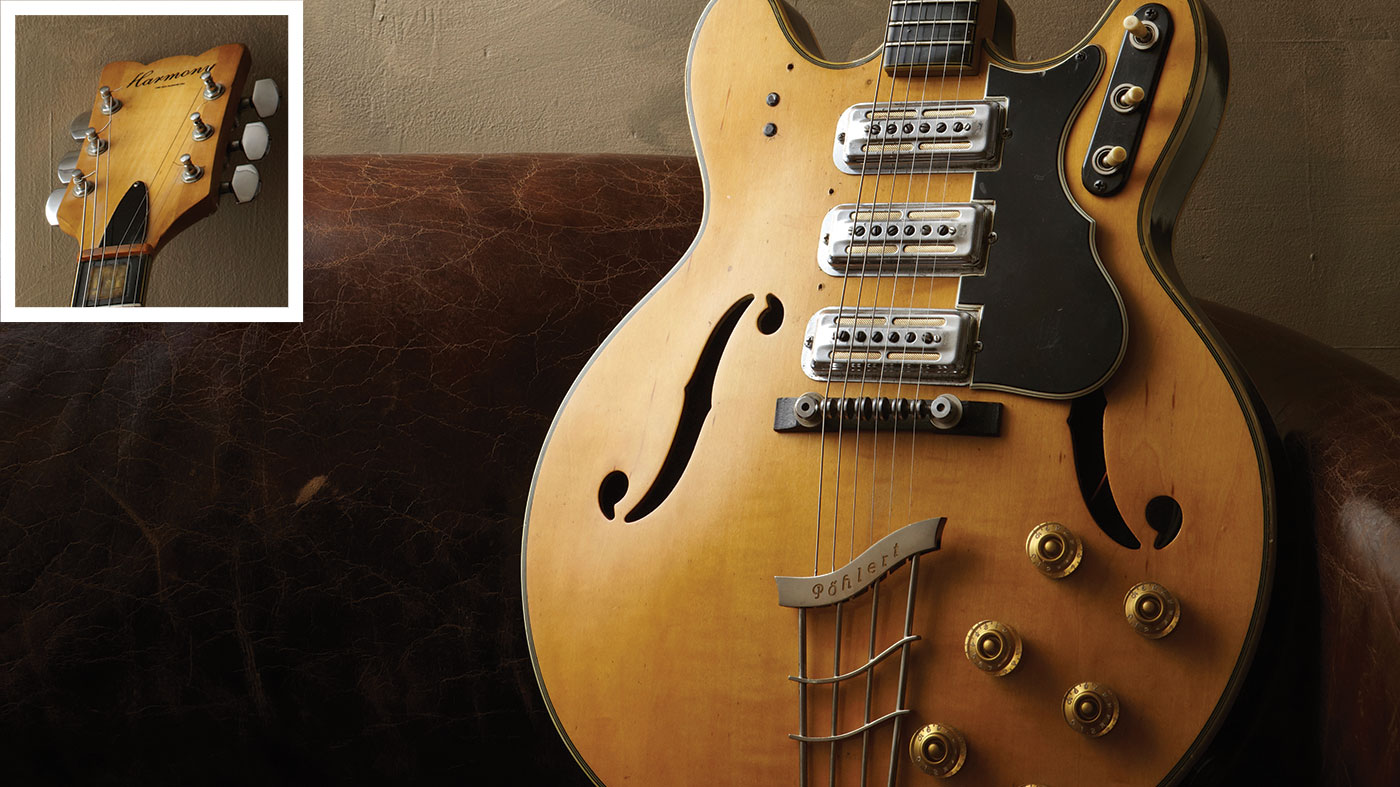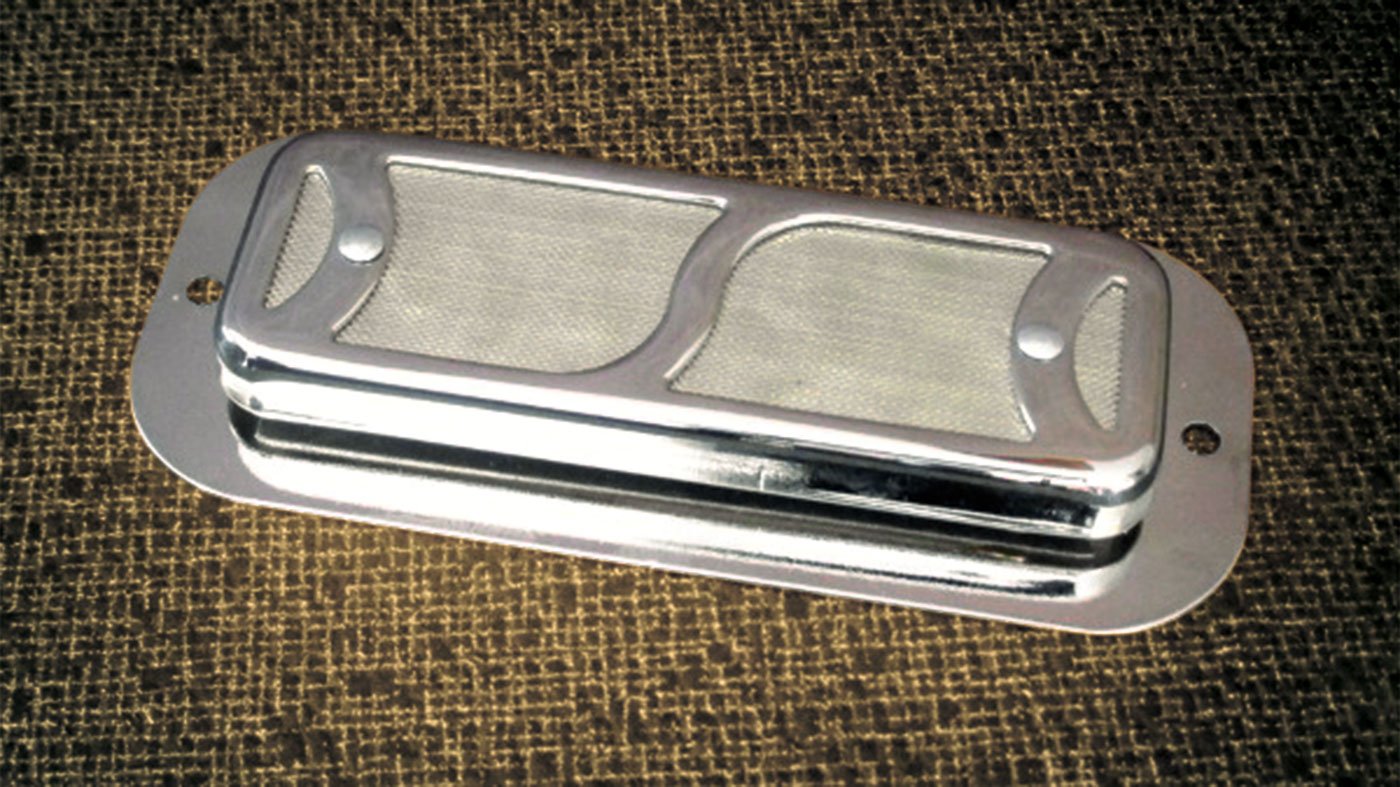
Curtis Novak, R&D scientist turned pickup tone consultant for the likes of Neil Young and Beck, demystifies the legendarily vibey sound of DeArmond Gold Foil pickups...
When it comes to gold foil pickups, the archetypal image typically conjured by many guitarists is a DeArmond-loaded Harmony guitar such as a Stratotone or a Meteor. These instruments were so abundant and relatively affordable in the 50s and 60s that the law of averages has guaranteed a very decent number of clean and original examples can be found on today’s vintage parts market.
It’s really hard for people to buy a vintage gold foil, as you never know what’s going to be inside it
At times referred to in the catalogues of yesteryear as Golden Tone pickups, the colloquial term ‘gold foil’ is more commonly applied, due to the metalcoloured protective/decorative plastic shim so often seen on their covers. However, as pickup consultant Curtis Novak explains, this term is not exclusive to pickups of this particular appearance.
“Oddly enough, the early [DeArmond] 50s pickups are often called gold foils, but they didn’t use the gold-coloured [cover] until a bit later on,” says Curtis. “There’s hardly any difference between the early Stratotone pickups - sometimes called the ‘Hershey bar’ pickup because of its smooth, silver-coloured top - and the later gold foils. The coil was the same, although they were wound with a lower resistance.
“Gold foil is a broad term relating to some of the covers, but the interesting thing is, having dissected thousands of them, the only consistent part I’ve seen on any type of gold foil is the cover itself. Some of them might use an alnico magnet, while the next one could be a rubberised magnet, so it’s really hard for people to buy a vintage gold foil, as you never know what’s going to be inside it.
“People sometimes have the tendency to hear with their eyes and not their ears and will often comment that one type of gold foil sounds better than the other. But having played and documented the different specs from all of the vintage pickups that have crossed my bench, the gold foils I produce now are what people generally like - and they’re consistent!

All that glitters
“I’m not sure what suddenly made gold foils as popular as they are, but some musicians just want to play something a little different - usually their childhood guitar, or something funky. But ‘funky’ doesn’t always sound good on stage with the band! A lot of what DeArmond did was for low-end guitars, so it was often more about the appearance. But if you have a blindfold on and you throw 100 darts at the wall, at some point you’re going to hit a couple of bullseyes, and that’s what they did.
Get the MusicRadar Newsletter
Want all the hottest music and gear news, reviews, deals, features and more, direct to your inbox? Sign up here.
“I often get emails from guitarists saying things like, ‘Gold foils are all the rage, but I got one and it sounds really bad!’ So what I often do for people is take the pickup apart and make it completely stage-worthy. The decoration looks great, but it’s often about reworking the original pickup to make it functional at stage volume and help the artist who’s struggling with their tone.
The thing I really like about gold foils is their simple design - in fact, they often don’t really have what you would call a bobbin
“The thing I really like about gold foils is their simple design - in fact, they often don’t really have what you would call a bobbin - but they are challenging and labour-intensive to produce. The biggest hurdle is figuring out how to wind them small and get them in the containers. Making the covers right is also very challenging - I spent a small fortune getting the tooling done for that!
“Rowe Industries also famously made DeArmond pickups for Gretsch, Silvertone and Kay-branded guitars and were primarily a pickup company (they weren’t so much into making the whole instrument) but it seems that by the 70s things really started to tail off and the quality went downhill. It was the arena rock era and more people started buying more high-end gear. It was all about a particular, high-quality sound and people weren’t really into playing guitars with a ‘junk-y’ tone, so Harmony guitars and the more budget-focused end of things with DeArmonds became less and less popular.
“In the 90s, Kurt Cobain and the whole grunge scene were often seen playing crappy guitars they could get out of a pawn shop. Those guys were often dirt poor, couldn’t afford a Strat or a Tele, and didn’t want to sound like Stevie Ray Vaughan or Eric Clapton. People started thumbing their nose at the establishment saying, ‘I’m going to play a shitty guitar!’ and that drew a lot of interest back to these old goldfoil pickups and guitars. But a great musician can make anything sound good.”
Guitarist is the longest established UK guitar magazine, offering gear reviews, artist interviews, techniques lessons and loads more, in print, on tablet and on smartphones Digital: http://bit.ly/GuitaristiOS If you love guitars, you'll love Guitarist. Find us in print, on Newsstand for iPad, iPhone and other digital readers
“For players who want more – more pickups, more speed, and more in-your-face Kramer attitude”: Kramer delivers the face-melting shred candy with six refreshed electrics, complete with US-made pickups
“The perfect magnetic combination to unlock the full tonal potential of your P/J Bass”: Fender releases a Tim Shaw-designed Chrome Cobalt pickups for the P/J configured bass guitar in your life






![PRS Archon Classic and Mark Tremonti MT 15 v2: the newly redesigned tube amps offer a host of new features and tones, with the Alter Bridge guitarist's new lunchbox head [right] featuring the Overdrive channel from his MT 100 head, and there's a half-power switch, too.](https://cdn.mos.cms.futurecdn.net/FD37q5pRLCQDhCpT8y94Zi.jpg)





